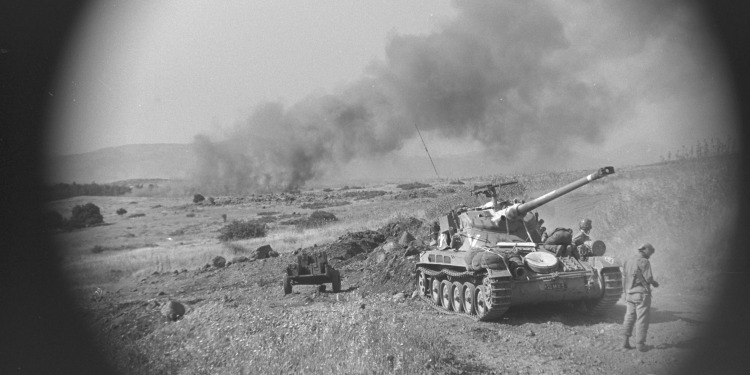Six Things You Didn’t Know About the Six-Day War
The Fellowship | June 6, 2017

Those of us who stand for Israel may know or recall many of the important aspects of the Six-Day War of 1967. But, fifty years later, memories do fade. The Times of Israel’s Ron Kampeas tries to refresh our collective memory by educating us about some of the forgotten details of the war, including the reunification of Jerusalem, settlements on land captured by Israel, and even an ancient synagogue in Gaza:
“The future belongs to the complete Jerusalem that shall never again be divided,” Prime Minister Benjamin Netanyahu said two years ago on Jerusalem Day, which marks the Hebrew calendar anniversary of Israel’s capture of eastern Jerusalem during the Six-Day War.
The adjectives vary – “complete,” “united,” “indivisible” — but the meaning is clear enough: Israel will never cede an inch of the Jerusalem it reunited.
Except when it formally reunited Jerusalem is not so clear: 1967? 1980? 2000? Ever?
On June 27, 1967, less than three weeks after the war’s end, Israel’s Knesset passed ordinances that allowed Israeli officials to extend Israeli law into areas of their designations. The next day, the Interior Ministry acted on those new ordinances, extending Israeli law into the areas that now constitute the Jerusalem municipality. They included 28 Palestinian villages, the Old City and what had been defined by Jordan as municipal Jerusalem.
So, June 28, 1967, apparently is when Israel “united” Jerusalem…
There are plenty of dramatic markers in the history of the return of Jews to the areas Israel captured in the Six-Day War:
The first homes reoccupied by Jews in the Old City’s Jewish Quarter, in 1969; the Jews, led by Rabbi Moshe Levinger, who moved into a Hebron hotel to mark Passover 1968 and would not leave until the government allowed them to establish the settlement that would become Kiryat Arba; the settlers who would not leave the area of Sebastia in the northern West Bank until the government in 1975 allowed them to establish Elon Moreh.
But the first settlement? That would be Merom Golan, a kibbutz originally named Kibbutz Golan, when Israelis quietly moved in on July 14, 1967, just over a month after the war…
The Western Wall, Qumran, Shiloh, King Herod’s tomb – the Six-Day War was a boon for historians seeking evidence of ancient Jewish settlement in the Holy Land.
Most of these sites are in the West Bank and eastern Jerusalem. But a team of archaeologists rushed to the Gaza Strip within weeks of its capture.
Why? In 1966, Egypt’s Department of Antiquities announced the discovery of what it said was an ancient church on Gaza’s coast. Examining the pictures in the Italian antiquities journal Orientala, Israeli archaeologists immediately understood it was no church – it was a synagogue.
Visible in one photograph was a Hebrew inscription, “David,” alongside a harpist – King David…
